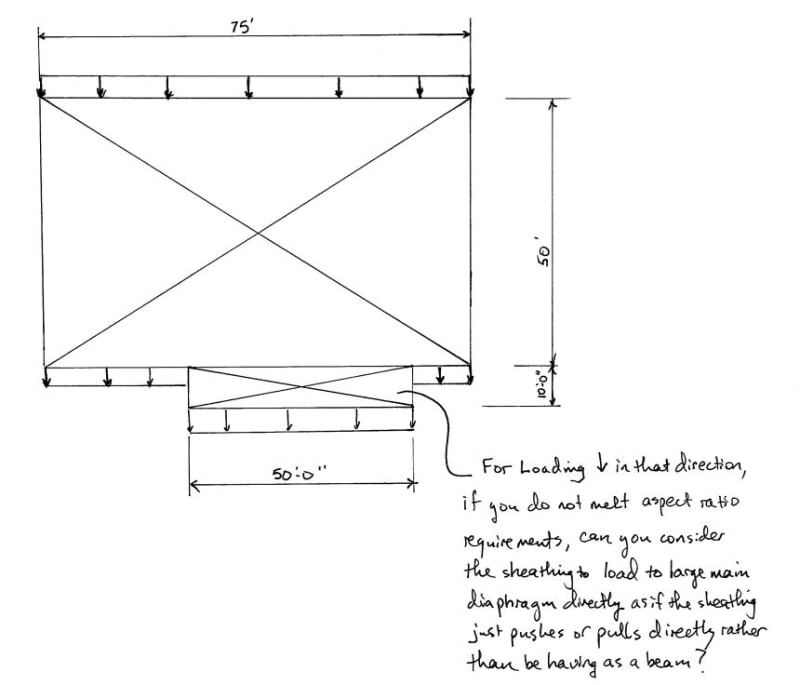zrck99
Structural
- Dec 19, 2014
- 82
The attached sketch shows a large 50' x 75' wood diaphragm with a small bumpout 10' x 50' diaphragm next to it. What are the rules for treating a small side portion like the 10' x 50' bumpout as if it will not act as a beam but rather just transfer its shear directly back to the main diaphragm?
Thanks.
Thanks.




